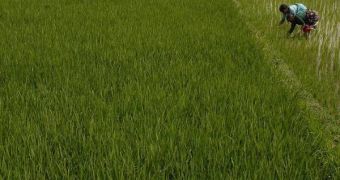According to a new scientific study, it may be that the earliest forms of agriculture may have had a significant impact on the overall climate and temperatures on a global scale, mostly on account of the fact that massive numbers of trees were burnt to give way to crop fields. As the trees burned, they also released all of the carbon dioxide they had stored in them, which could amount to millions of tons, according to experts. A new scientific study on the subject was published online in the August 17th issue of the journal Quaternary Science Reviews.
The new study, conducted by experts at the University of Virginia and the University of Maryland in Baltimore County, proposes that early civilizations used more land per person than our society does today, and all for noticeably lower food productions. Because of the low yield they got from the land, our ancestors may have been forced to rely on slash-and-burn strategies in order to clear immense swaths of land for an increasing demand of agricultural goods.
“They used more land for farming because they had little incentive to maximize yield from less land, and because there was plenty of forest to burn. They may have inadvertently altered the climate,” University of Virginia Professor Emeritus of Environmental Sciences William Ruddiman, who is also the lead author of the new studies, explains. He is specialized in investigating ocean-sediment and ice-core records. Over the past few years, his team has included anthropologists, archaeologists, population dynamics experts, and climatologists, and all of them tried to get a better insight into how the world's early agricultural experiences might have looked like.
It goes without saying that our ancestors never heard of crop rotation. Therefore, the experts believe that they would use a piece of land until yields began to decrease significantly, after which time they would simply burn down another section of the forest, and move to that parcel, while leaving the previous patch in disarray. The team believes that it was only after the population increased over a certain threshold, and the land became scarce, that early societies began to focus on increasing yields, rather than on expanding the amount of land they used.
“It was only as our populations grew larger over thousands of years, and needed more food, that we improved farming technologies enough to begin using less land for more yield. We suggest in this paper that climate modelers might consider how land use has changed over time, and how this may have affected the climate,” Ruddiman adds.
“Many climate models assume that land use in the past was similar to land use today; and that the great population explosion of the past 150 years has increased land use proportionally. We are proposing that much smaller earlier populations used much more land per person, and may have more greatly affected climate than current models reflect,” UMBC ecologist Erle Ellis concludes.

 14 DAY TRIAL //
14 DAY TRIAL //